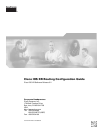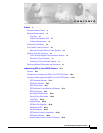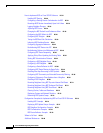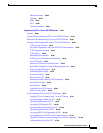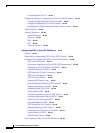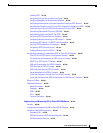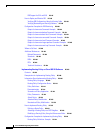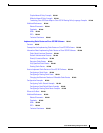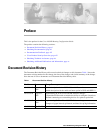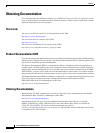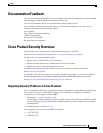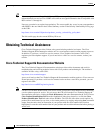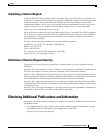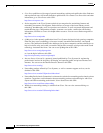
Contents
RC-vi
Cisco IOS XR Routing Configuration Guide
Customizing Routes for IS-IS RC-119
Configuration Examples for Implementing IS-IS on Cisco IOS XR Software RC-122
Configuring Single-Topology IS-IS for IPv6: Example RC-122
Configuring Multitopology IS-IS for IPv6: Example RC-123
Redistributing IS-IS Routes Between Multiple Instances: Example RC-123
Where to Go Next RC-124
Additional References RC-124
Related Documents RC-124
Standards RC-124
MIBs RC-124
RFCs RC-125
Technical Assistance RC-125
Implementing OSPF on Cisco IOS XR Software RC-127
Contents RC-127
Prerequisites for Implementing OSPF on Cisco IOS XR Software RC-128
Information About Implementing OSPF on Cisco IOS XR Software RC-128
OSPF Functional Overview RC-129
Key Features Supported in the Cisco IOS XR OSPF Implementation RC-130
Comparison of Cisco IOS XR OSPFv3 and OSPFv2 RC-131
Importing Addresses into OSPFv3 RC-131
OSPF Hierarchical CLI and CLI Inheritance RC-131
OSPF Routing Components RC-132
OSPF Process and Router ID RC-134
Supported OSPF Network Types RC-135
Route Authentication Methods for OSPF Version 2 RC-135
Neighbors and Adjacency for OSPF RC-136
Designated Router (DR) for OSPF RC-136
Default Route for OSPF RC-137
Link-State Advertisement Types for OSPF Version 2 RC-137
Link-State Advertisement Types for OSPFv3 RC-137
Virtual Link and Transit Area for OSPF RC-138
Route Redistribution for OSPF RC-139
OSPF Shortest Path First Throttling RC-139
Nonstop Forwarding for OSPF Version 2 RC-140
Load Balancing in OSPF Version 2 and OSPFv3 RC-141
Graceful Restart for OSPFv3 RC-141
Multicast-Intact Feature RC-144
How to Implement OSPF on Cisco IOS XR Software RC-144



